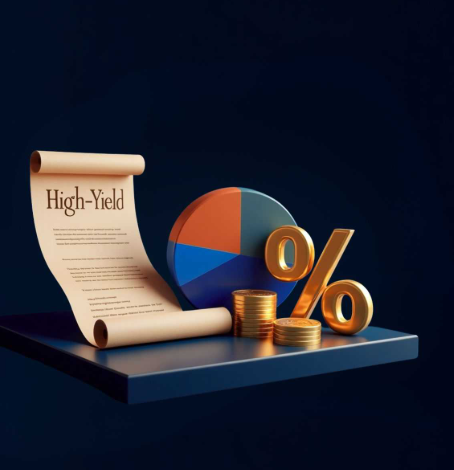Understanding Market-Linked Investments: A Comprehensive Overview

Introduction to Market-Linked Investments
Market-linked investments are financial products that tie the returns you earn to the performance of market assets such as stocks, indices, and commodities. These investments are highly dynamic, with the value of the underlying assets fluctuating based on market conditions. When the market is performing well, it’s considered a “bullish” market, while a “bearish” market occurs when prices are falling.
The core idea behind market-linked investments is that they offer the potential for high returns but come with higher risk due to market volatility. This article will delve into the key features, types, and benefits of these investments, helping you understand how they work and whether they suit your investment strategy.
Key Features of Market-Linked Investments
Definition and Structure
Market-linked investments are tied to assets like stocks, shares, commodities, or other high-performing securities. The value of these assets, and thus the return on your investment, fluctuates based on market conditions. While some level of capital protection may be available, particularly in adverse market conditions, returns depend entirely on how the market performs.
These investments are often categorized based on their duration, either short-term or long-term, depending on your financial goals and needs. The returns you receive are subject to the rise and fall of the market, with no guarantees of stable returns.
Performance-Linked Returns
The primary factor influencing returns on market-linked investments is market performance. If the value of the assets increases during your investment term, you could see substantial returns in the form of dividends, interest, or capital appreciation. However, if the market underperforms, the returns may be lower, or in some cases, negligible. This introduces an element of risk, as the value of these investments is subject to market fluctuations.
Risk vs. Reward
Market-linked investments typically offer higher returns than traditional fixed-income securities, such as bonds. This higher potential for return is what attracts many investors, especially in a thriving market. However, this increased potential for gain also comes with the possibility of losses, making these investments riskier than other, more stable options.
Diversification
By investing in a mix of assets such as stocks, bonds, and commodities, you can build a diversified portfolio that minimizes the risk of significant losses. Diversification helps ensure that if one asset class underperforms, others may still perform well, providing a cushion for your investment.
Liquidity
Market-linked investments are generally considered liquid, as assets like stocks can be bought and sold on exchanges. However, the ability to quickly sell investments depends on market conditions. If market prices are not favorable, you may need to wait for the right time to sell, which could delay the realization of profits.
Long-Term Horizon
To maximize returns on market-linked investments, it is often advisable to hold them over a longer period. This allows the value of your investments to grow and accumulate interest or dividends, compounding over time. Long-term holding also helps weather short-term market fluctuations, contributing to a more stable overall return.
Types of Market-Linked Investments
Equity Mutual Funds
Equity mutual funds pool money from multiple investors and invest it in stocks. These funds are managed by professional fund managers, and the returns are based on the performance of the stocks within the fund. Examples include large-cap, mid-cap, and sectoral funds, each focusing on different segments of the market.
Exchange-Traded Funds (ETFs)
ETFs are similar to mutual funds but trade like individual stocks on the stock exchange. They track indices such as the Nifty 50 or the S&P 500, providing investors with exposure to a diversified portfolio of stocks, commodities, or bonds. ETF returns are linked to the performance of the underlying index.
Stock Market Investments
Investing directly in individual stocks allows you to own shares of companies like Apple or Tesla. Your returns come from dividends and the appreciation in stock prices. However, stock investments are highly variable, and returns depend on the performance of the individual stocks you own.
Market-Linked Debentures (MLDs)
Market-linked debentures are fixed-income securities linked to the performance of a market index. While the principal investment is protected, the returns depend on how the linked market assets perform. MLDs are often used by investors seeking a blend of safety and market exposure.
Index Funds
Index funds are mutual funds or ETFs that track specific market indices. They aim to replicate the performance of indices like the Nifty 50 or S&P 500. These funds offer broad market exposure and can be a relatively low-cost way to invest in the stock market.
Real Estate Investment Trusts (REITs)
REITs are companies that own or manage real estate assets. They offer investors a way to invest in real estate without directly owning property. Returns are generated through the rental income from these properties and the appreciation of the underlying assets.
Commodities
Investing in commodities such as gold, silver, or agricultural products allows you to gain exposure to the physical assets themselves. The returns on commodity investments depend on how the commodity markets perform.
Benefits of Market-Linked Investments
Customization
Market-linked investments offer a high degree of customization, allowing you to select assets that align with your investment budget and financial goals. You can also choose the investment horizon that suits your needs, whether short-term or long-term.
Diversification
Investors can diversify their portfolios by including a variety of asset types, including equities, commodities, and structured products. Diversification helps protect against market volatility, ensuring that a downturn in one area doesn’t result in significant losses across your entire portfolio.
Potential for High Returns
One of the most attractive features of market-linked investments is the potential for high returns. As the market performs well, investors can see significant capital appreciation, dividends, or interest payouts. This potential for upside is especially appealing when compared to the more modest returns of traditional bonds or fixed-income securities.
Periodic Income
Many market-linked investments offer regular income through dividends or interest payouts. This can provide a valuable source of passive income, supplementing your primary earnings from work or business. Additionally, if the investments perform well, you can benefit from compounded returns over time.
Conclusion
Market-linked investments offer a unique opportunity for investors seeking high returns, diversification, and the potential for growth. While they come with higher risks compared to traditional fixed-income investments, the rewards can be substantial if managed wisely. By understanding the types, benefits, and risks associated with these investments, you can make informed decisions that align with your financial objectives.




